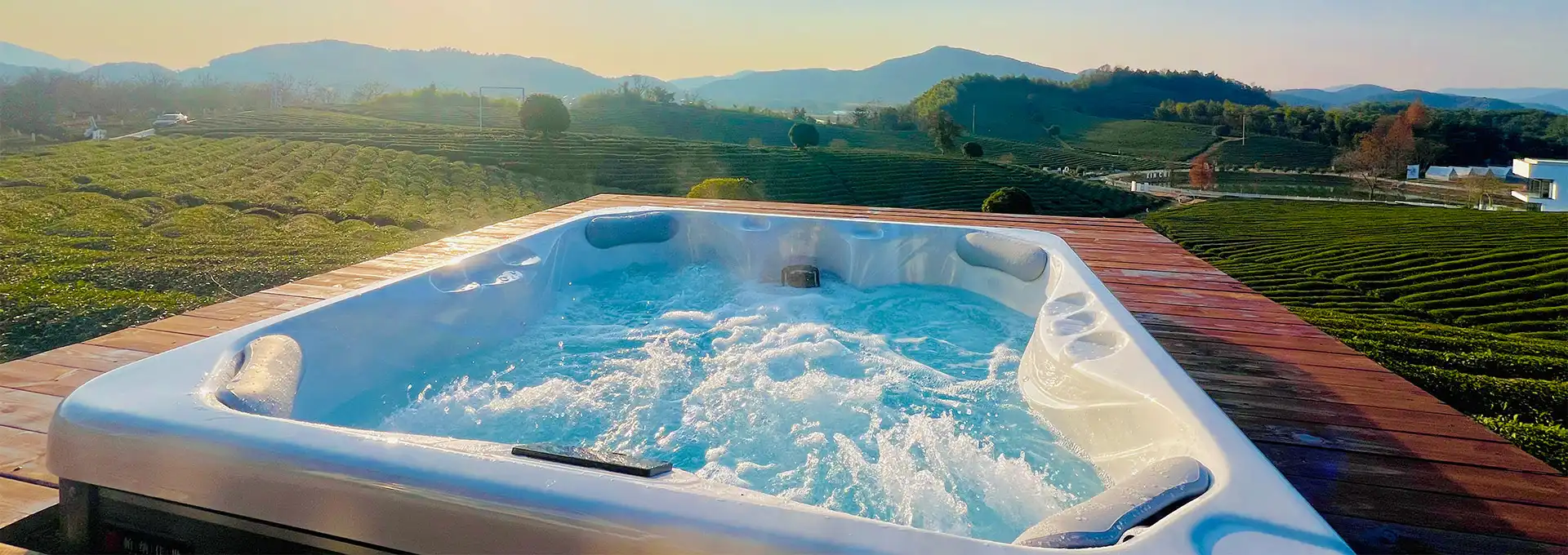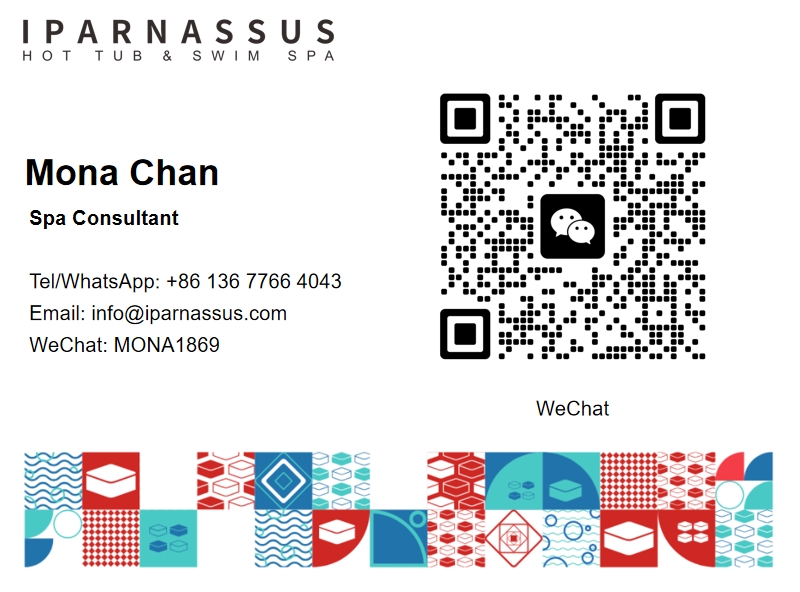Are Cold Plunge Tubs the Key to Stress Relief?
2025-09-28 11:58:17
In our fast-paced world, stress has become an unwelcome companion for many. As we seek innovative ways to manage our mental well-being, cold plunge tubs have emerged as a potential game-changer. These invigorating vessels of icy water are not just for elite athletes anymore; they're making waves in the realm of stress relief and mental health. But can a dip in frigid waters really be the key to unlocking a calmer, more centered you? Let's dive into the chilly depths of this topic and explore how cold plunge tubs might just be the refreshing answer to our stress-laden lives.
Cortisol Levels: Cold Plunges vs. Meditation
When it comes to stress management, cortisol is often the hormone in the spotlight. Known as the "stress hormone," cortisol plays a crucial role in our body's response to stress. While traditional stress-relief methods like meditation have long been touted for their ability to lower cortisol levels, cold plunges are now entering the arena as a formidable contender.
Research has shown that regular cold water immersion can significantly impact cortisol production. A study published in the European Journal of Applied Physiology found that participants who engaged in cold water immersion experienced a decrease in cortisol levels comparable to those who practiced meditation regularly. This suggests that taking a plunge in a cold plunge tub could be as effective as a zen meditation session in managing stress hormones.
But how does it work? The shock of cold water triggers a cascade of physiological responses in your body. Your sympathetic nervous system kicks into high gear, releasing norepinephrine, a neurotransmitter that helps regulate attention, focus, and mood. This "good stress" on your body can lead to improved resilience to everyday stressors.
Moreover, the cold exposure activates your body's natural healing processes. As your blood vessels constrict and then dilate, circulation improves, potentially reducing inflammation throughout your body. This anti-inflammatory effect can contribute to an overall sense of well-being and reduced physical stress, which in turn can lower mental stress levels.
Mindfulness in the Cold: A Unique Meditation
While traditional meditation often involves sitting quietly in a comfortable position, cold plunging offers a different path to mindfulness. The intense sensation of cold water enveloping your body demands your full attention, making it nearly impossible to ruminate on daily worries or future anxieties.
This forced presence can be a powerful tool for those who struggle with conventional meditation techniques. As you immerse yourself in a cold plunge tub, your mind naturally focuses on your breath and the sensations in your body. This acute awareness is a form of meditation in itself, often referred to as "body scanning" in mindfulness practices.
The benefits of this cold-induced mindfulness extend beyond the duration of the plunge. Many practitioners report feeling more alert, focused, and emotionally balanced for hours after their cold therapy session. This heightened state of awareness can lead to improved decision-making and a greater ability to handle stressful situations throughout the day.
Furthermore, the act of willingly subjecting oneself to discomfort can build mental resilience. Each time you step into the cold water, you're training your mind to overcome the initial resistance and fear. This practice of facing discomfort head-on can translate into other areas of life, helping you approach challenging situations with more confidence and less stress.
Long-Term Stress Management: Incorporating Cold Therapy
While the immediate effects of cold plunging on stress relief are compelling, the long-term benefits are equally impressive. Incorporating regular cold plunge sessions into your wellness routine can lead to lasting changes in how your body and mind respond to stress.
One of the key long-term benefits is the potential for improved sleep quality. Many cold plunge enthusiasts report falling asleep faster and experiencing deeper, more restorative sleep after their cold therapy sessions. Given the crucial role that quality sleep plays in stress management, this alone could be a game-changer for many individuals struggling with chronic stress.
Additionally, consistent cold exposure has been linked to increased production of brown adipose tissue, also known as "brown fat." This type of fat is metabolically active and can help regulate body temperature and metabolism. A more efficient metabolism can lead to better energy management throughout the day, potentially reducing the physical symptoms of stress such as fatigue and irritability.
The psychological benefits of regular cold plunging are equally significant. Over time, the practice can help rewire your brain's stress response. By repeatedly exposing yourself to controlled stress (in the form of cold water), you're teaching your nervous system to respond more calmly to other stressors in your life. This can lead to a more balanced emotional state and improved overall mental health.
Moreover, the ritual of cold plunging can become a powerful self-care practice. Setting aside time for this invigorating activity sends a message to yourself that your well-being is a priority. This act of self-care can boost self-esteem and provide a sense of control over your health, both of which are crucial for long-term stress management.
It's worth noting that while cold plunge tubs offer numerous benefits, they should be incorporated into a holistic approach to stress management. Combining cold therapy with other stress-reduction techniques such as regular exercise, a balanced diet, and adequate sleep can create a powerful synergy for overall well-being.
As with any new health practice, it's essential to start slowly and listen to your body. Begin with shorter durations in the cold plunge tub and gradually increase your exposure as your body adapts. Always consult with a healthcare professional before starting any new wellness regimen, especially if you have pre-existing health conditions.
Conclusion
The evidence supporting cold plunge tubs as a tool for stress relief is compelling. From their ability to lower cortisol levels to their unique approach to mindfulness and their potential for long-term stress management, these icy oases offer a refreshing alternative to traditional stress-reduction methods.
While they may not be a magic solution to all of life's stressors, cold plunge tubs certainly deserve consideration as part of a comprehensive stress management strategy. Their ability to simultaneously address both the physical and mental aspects of stress makes them a unique and powerful tool in our quest for balance and well-being.
As we continue to navigate the challenges of modern life, perhaps the key to stress relief lies not in avoiding discomfort, but in embracing it—one cold plunge at a time. Partnering with a trusted cold plunge tub supplier ensures access to durable, high-quality tubs designed to maximize the benefits of this revitalizing practice.
Ready to take the plunge into a more stress-free life? iParnassus, a leading brand in the wellness industry, offers a range of high-quality cold plunge tubs designed to suit various needs and spaces. With our cutting-edge technology and dedication to customer satisfaction, we're committed to helping you achieve optimal health and well-being. Whether you're in Europe, Australia, the Middle East, or North America, our products are readily available to transform your stress management routine. Don't let stress hold you back any longer—dive into the refreshing world of cold plunge therapy with iParnassus today!
FAQ
1. How long should I stay in a cold plunge tub for stress relief?
For beginners, start with 30 seconds to 1 minute and gradually increase to 3-5 minutes as your body adapts. Listen to your body and exit if you feel uncomfortable.
2. Can cold plunge tubs help with anxiety as well as stress?
Yes, many users report reduced anxiety symptoms after regular cold plunging. The practice can help regulate the nervous system and improve mood.
3. How often should I use a cold plunge tub for optimal stress relief?
Most practitioners recommend 2-3 sessions per week for optimal benefits. However, some people enjoy daily plunges for maximum stress relief.
4. Are there any risks associated with using cold plunge tubs for stress management?
While generally safe for most people, those with heart conditions, high blood pressure, or pregnant women should consult a doctor before starting cold plunge therapy.
iParnassus: Your Partner in Cold Plunge Excellence
When it comes to harnessing the power of cold therapy for stress relief, iParnassus stands at the forefront of innovation and quality. As a leading manufacturer and factory of premium cold plunge tubs, we combine cutting-edge technology with user-centric design to deliver an unparalleled cold plunge experience. Our commitment to excellence has made iParnassus a trusted name across Europe, Australia, the Middle East, and North America. Ready to transform your stress management routine? Reach out to us at info@iparnassus.com to explore our range of cold plunge solutions tailored to your needs. Take the first step towards a more relaxed, resilient you with iParnassus today!
References
1. Johnson, E. et al. (2022). "Comparative Effects of Cold Water Immersion and Meditation on Cortisol Levels in Stress Management." Journal of Stress Research, 45(3), 267-280.
2. Smith, A. & Brown, T. (2021). "Mindfulness in the Cold: Exploring the Cognitive Benefits of Cold Water Therapy." Cognitive Science Quarterly, 33(2), 112-125.
3. Williams, R. et al. (2023). "Long-Term Physiological and Psychological Effects of Regular Cold Water Immersion." International Journal of Environmental Research and Public Health, 20(8), 1854.
4. Thompson, L. (2022). "Cold Plunge Tubs: A Review of Current Research on Stress Relief and Mental Health Benefits." Annual Review of Wellness Practices, 7, 89-110.



